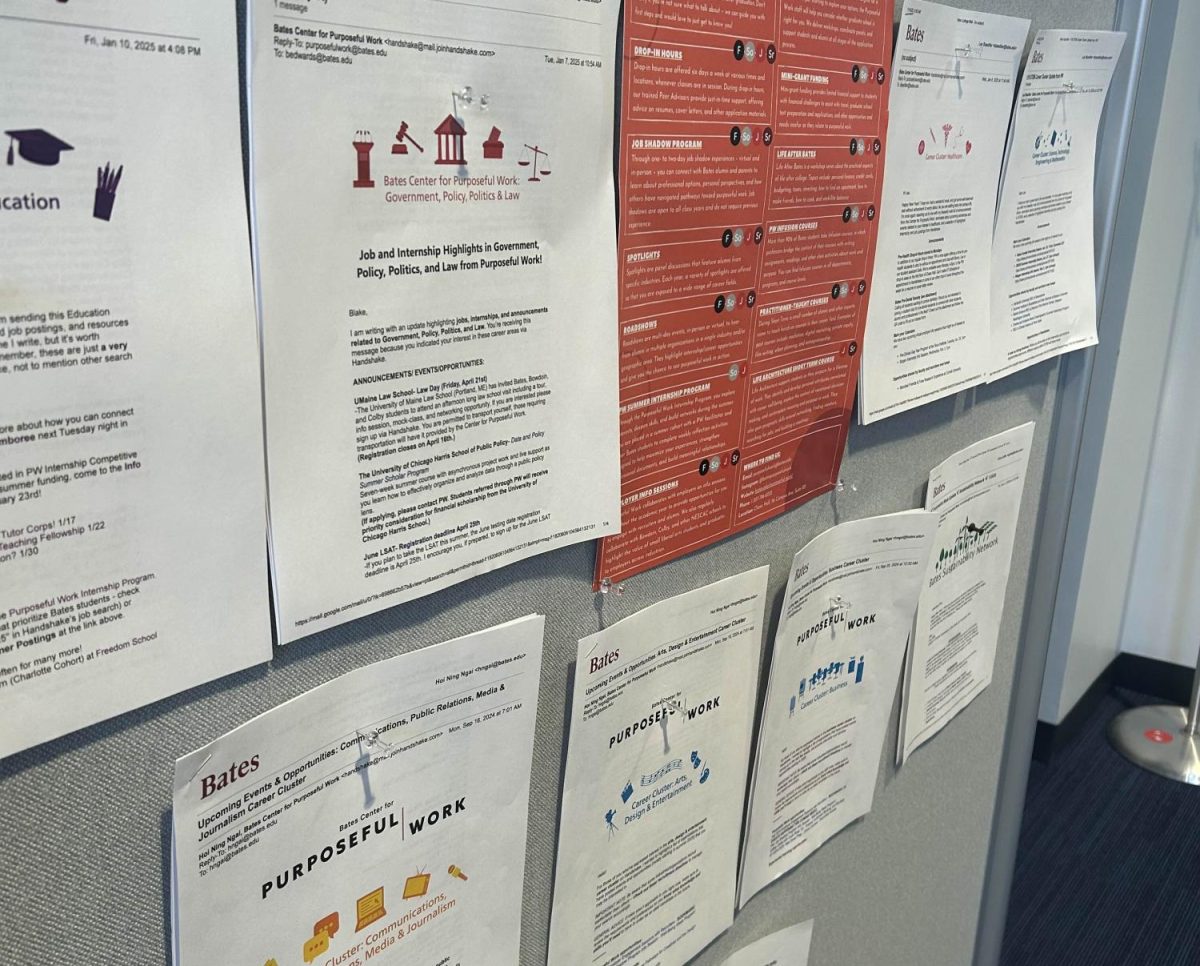“What started as my own angry outburst at a personal affront on the street evolved into a set of responses to injustice that suggest that girls are not as powerless as they’re taught they are and that individuals and society have the ability to change.” – Jewelle Gomez
This past week, the author of The Gilda Stories, a novel portraying a black, lesbian, vampire protagonist, came to Bates to share her novel and her knowledge of the feminism and creative writing. The English department, the Women & Gender Studies department, the Learning Associates Program, and the Division of the Humanities sponsored the author, Jewelle Gomez.
Gomez is a lesbian feminist activist who began her activist career in the 1960s in Boston. She is an author, playwright, poet, and critic; she has published a number of short stories and poetry that appeared in Dark Matter: A Century of African American Speculative Fiction, was on the founding board of GLAAD (Gay and Lesbian Alliance Against Defamation), and most recently, coauthored a play on James Baldwin titled, “Waiting for Giovanni” that premiered in 2011. Gomez currently resides in California where she promotes LGBT rights, and fights for marriage equality.
Gomez is without a doubt, a cultured and intellectual woman. Having read her book, I found myself understanding her political stances and her dreams for a future in which sexism and anti-gay sentiments do not exist.
The birth of The Gilda Stories began after two men harassed Gomez as she was standing in a phone booth in New York City.
“They didn’t see that their idea of fun was humiliating and dehumanizing to women in general and to me in particular. And they certainly had no idea that centuries of such casual objectification had a debilitating affect on human relations,” Gomez stated.
Gomez explained how The Gilda Stories developed: “What started as my own angry outburst at a personal affront on the street evolved into a set of responses to injustice that suggest that girls are not as powerless as they’re taught they are and that individuals and society have the ability to change.”
Before reading, and having not heard of the reasons for which Gomez wrote The Gilda Stories, I found myself questioning the idea of reading a vampire book. I did not like Twilight, I don’t care for True Blood, and Buffy the Vampire Slayer was the last show I wanted to see as a child.
Gomez came to a number of classes here at Bates, in which the question, “Why vampires?” was asked of her often. Gomez claimed to write vampire fiction for two reasons: the first, because Gomez adores vampire fiction; the second, because genre writing is a great way to introduce controversial topics to her readers (often vampire enthusiasts) in a way that is not controversial or didactic. Gomez added, “Everything I write is political, it’s my job to make it interesting.”
Still skeptical? Let me add that Gomez avoided the typical vampire story. The Gilda Stories begin in 1850 Louisiana with Gilda, a slave child who runs away from a plantation. Nearly caught and brought back to slavery, Gilda is saved by two women who run a brothel, who just happen to be vampires. This brothel is not the typical whore-house, but instead is a woman’s haven, the only place, historically, where women could define themselves independent both economically and socially. Curious yet?
The reader reads about Gilda as she travels through time. In 1850 Gilda is in Louisiana; in 1890, Yerba Buena; in 1921, Rosebud, Missouri; in 1955, the South End, Boston; in 1971 and 1981, New York City; in 2020, Hampton Falls, New Hampshire; and in finally, in 2050, she travels from the Midwest to Peru. Throughout these decades, she experiences societies in which racism and sexism are rampant, as well as societies in which race and sex are inconsequential factors of life.
The concept of a black lesbian former slave vampire, who traveled through time, was for me, first, bizarre; and second, fascinating. Reading, I fell back into time and saw how a black woman experienced social events in the highly racialized city of New Orleans, and later her experience living in the black neighborhood in South End, Boston in 1955. Sure, she was a vampire, but she also surrounded herself with humans, and Gomez was skillful in bringing history to her historical fiction, vampire story.
I’m not saying I loved the book—it has its flaws and as I have said earlier, I don’t particularly care for vampire fiction. While I am not passionate about Gomez’s writing, I think it is worthwhile to read a chapter (any chapter) of The Gilda Stories for the ideas and questions her story poses on the topics of sexism and racism.
Gomez believes that fiction is one such way for people to understand each other over racial and gender divides. So when Gomez offered her tale of a young black lesbian vampire, it’s a way for people to understand people who have similar lives to Gilda, as well as their history. You may have to ignore the fact she is a vampire and can live for centuries.
Ultimately, I liked the book. I probably would have put the book down after chapter one if I read it simply for pleasure. However, I became fascinated with the ideas behind The Gilda Stories and the acknowledgement that sexism and racism still exist today, even if we would rather not admit it.








